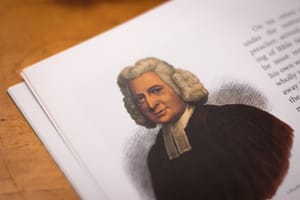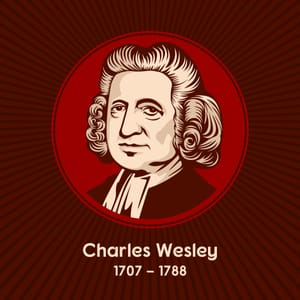The Clapham Sect and the abolition of the slave trade (4)
From the 1790s onwards, the Clapham Sect networked both inside and outside Parliament to bring about the end of Britain’s involvement in the slave trade.
The Clapham Sect was largely comprised of wealthy, evangelical Anglican laymen, of whom the most famous was William Wilberforce.
By April 1792, the House of Commons had received an unprecedented 519 petitions for the abolition of the slave trade. The petition from Edinburgh was so long as to stretch the length of the Commons floor.
A widespread sugar boycott had also started. Thomas Clarkson observed there was no town where some were not boycotting sugar and rum. He estimated that nearly 300,000 Britons had stopped using West Indian sugar.
With the help of the Abolition Committee, Clarkson prepared a diagram of the slave ship Brookes, to demonstrate the tight packing of slaves into slave ships. This visual aid was widely circulated and (in a non-image age) proved sensational.
The battle in Parliament proved much harder. After a while the West India lobby realised that its arguments were being trumped and, in the Commons debate of 1792, accepted Henry Dundas’ suggestion that the abolition be gradual.
Setbacks
The date for abolition was fixed for 1796 although in ‘West Indian’ minds a postponement of four years could easily be stretched to an indefinite period.
The date was certainly not to be 1796. News of the horrors of the French Revolution, followed by the outbreak of an Anglo-French war, proved highly unfavourable to the abolitionists’ cause; and the following years brought them one parliamentary defeat after another.
Sometimes the Claphamites seemed closer to achieving their goal. In 1794 Wilberforce managed to carry a Commons bill restricting the supply of slaves to foreign nations, but this was then thrown out by the Lords.
In 1796, Wilberforce lost the third reading of a Commons bill by only 74 votes to 70 — half a dozen abolitionist MPs, confident of victory, had gone to see a new Italian opera and so missed the vital vote.
By 1797, victory still seemed far off. Prime Minister William Pitt the younger, a close friend of Wilberforce and hitherto supportive of the cause, was unwell and intensely distracted by war with France and the escalating national debt. He could no longer be counted on.
In 1800, the war and bad harvests brought widespread distress to Britain, and Wilberforce decided it was ‘prudent to forbear bringing forward the question [of abolition] in any form’ before Parliament. Nor did he bring it forward between 1801 and 1803. However, the Clapham group continued to meet, usually at his home at Old Palace Yard, Westminster.
But the national mood was slowly beginning to change. No longer was abolition viewed as synonymous with sedition (see article, p.39, June ET). And in 1801, the Act of Union between England and Ireland brought 100 Irish MPs into Parliament with little instinctive sympathy for the trade.
Abolition
On 30 May 1804, Wilber¬force introduced an abolition bill to the Commons for the first time since 1799. He won this by 124 to 49 votes, but the bill was blocked by the Lords; the Lord Privy Seal, invoking the ‘wisdom of our ancestors’, boasted that there was one House, at any rate, that looked after the interests of merchants and colonists!
In January 1806 William Pitt died, and the resultant new government provided the breakthrough that the Clapham Sect needed. The new Prime Minister, Lord Grenville, was a convinced abolitionist, as was Charles Fox, his Foreign Secretary. Both men wanted to distinguish their new administration by an immediate abolition of the slave trade
Britain’s victories against France in the West Indies had already prepared the ground for the Foreign Slave Trade Act, which, in the interests of throttling French trade, prohibited British subjects from transporting slaves into captured colonies or foreign territories. It was now only a step away for Parliament to agree stopping the slave trade to British colonies as well.
There was a majority of abolitionists in the Cabinet, but Lord Grenville decided on a new political stratagem. For the first time, he introduced an abolition bill to the Lords before the Commons.
In the Lords, the West India lobby put up a heated rearguard action to this fresh assault. The Earl of Westmoreland declared that though ‘the Presbyterian and the prelate, the Methodist and the field preacher, the Jacobin and the murderer’ combined against British property, he at least would not yield.
But in February 1807 the bill won through and, a few weeks later, passed in the Commons by an overwhelming majority of 283 to 16. During that debate Solicitor General Romilly contrasted Bonaparte and Wilberforce as they retired for their night’s rest.
He described Bonaparte in all his pomp and power at the summit of ambition, yet losing sleep tormented by the thought of all the blood he had spilt and oppressions he had committed. He contrasted Wilberforce, returning home into the ‘bosom of his happy and delighted family, to lie down in pure and perfect felicity conscious of having preserved so many millions of his fellow creatures’.
The House rose to a man to cheer Wilberforce, who sat with head bowed and tears streaming down his face. On 25 March 1807, the Act for the Abolition of the Slave Trade received the royal assent.
It would be many years before the slave trade was totally suppressed and 27 years before the slaves in Britain’s colonies were declared free, but those goals were now secure.
Perseverance
Reviewing this remarkable, ‘virtuous’ page of British history, one can only be amazed at the perseverance of the Clapham Sect. This perseverance provides a highly relevant reminder to evangelicals today not to lose heart, but to keep contending for truth and righteousness in our society against all the odds.
There is also another lesson, applicable at several levels. Over the centuries there has been a marked tendency to overplay the role of William Wilberforce. His political influence, engaging character and evangelical status have understandably brought him much prominence. But we must remember that Wilberforce was one member of a larger Clapham group. The Clapham Sect’s campaign succeeded — and here’s the lesson! — not because of one celebrity, but because of close teamwork.
All the Claphamites were involved in gathering vital evidence against the trade for Parliament and lobbying for abolition. All took part in persuading the nation.
Without Thomas Clarkson’s indefatigable labours, Henry Thornton’s devoted wealth and astuteness, Zachary Macaulay’s courage and vigour, Thomas Babington’s care of Wilberforce and Macaulay, and James Stephen’s legal acumen, the Sect could not have succeeded.
Nor was this teamwork only a matter of words. In 1791 — the year Wilberforce lost his first Commons motion — Wilberforce, Granville Sharp, Henry Thornton, Lord Teignmouth, Charles Grant, Thomas Babington and others combined to launch the Sierra Leone Company. That African project was far bigger than one man.
Sierra Leone
Its proximate aim was to establish a colony for former slaves in Sierra Leone and thereby demonstrate that Africa need not be a gigantic slave farm. Its ultimate aim was to prove that Africa’s natives could become Christian and prosperous, and so hasten the end of slavery as an institution.
The company’s directors proved over-optimistic about the colony’s prospects, but they stuck to their course and in 1808 Sierra Leone became Britain’s first crown colony in Africa. Most of the credit for Sierra Leone’s early survival belongs to Zachary Macaulay, one of the great unsung heroes of abolition.
Macaulay became Governor of Sierra Leone in 1794 at the age of 26 years. His energy was astonishing. Somewhat dour but deeply spiritual, he had a phenomenal memory and during a crucial, vulnerable period ran the settlement single-handedly.
When he returned to England six years later, worn out and in poor health, it was in character that he chose to travel home in a slave ship, via the West Indies, to gather more data about the trade. Once home, he married and over the years following made continued vital contributions to the campaigns for abolition and slave emancipation.
Clapham was indeed all about team work. Yet William Wilberforce’s contribution must not be underestimated either — he was an indispensable part of that team. His contribution will be examined again in the final article.
Roger Fay
To be concluded



















